Some animals have managed to survive mass extinctions not just once, but several times over millions of years. While most of their contemporaries couldn’t make it, these resilient creatures have stood the test of time. It’s pretty fascinating to think about how they adapted to drastic changes in climate, habitat, and food sources. Let’s dive into the lives of these incredible survivors and explore why they’re still around today.
1. Horseshoe Crab
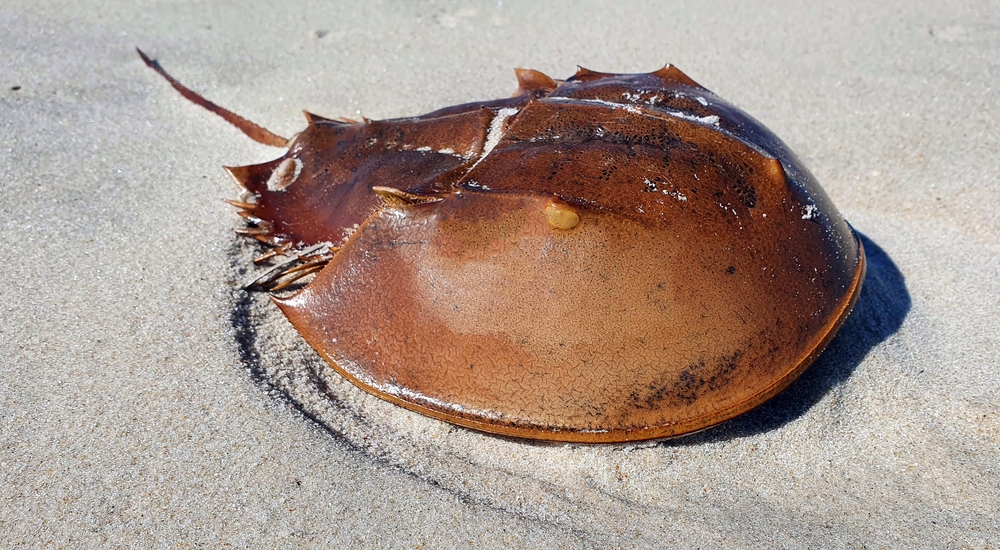
If you’ve ever seen a horseshoe crab, you know they look like they belong in a prehistoric world. And that’s because they do! These critters have been around for over 450 million years, surviving multiple mass extinctions. One key reason for their survival is their adaptability; they can thrive in a variety of habitats, from deep ocean floors to shallow coastal waters. According to marine biologist Dr. John Tanacredi, their tough, adaptable physiology and simple body structure have been crucial to their longevity.
Interestingly, horseshoe crabs play an essential role in modern medicine. Their blue blood contains a substance used to test for bacterial contamination in medical devices and vaccines. This makes them not just ancient survivors but also modern-day heroes. However, despite their resilience, they are now facing new threats such as habitat destruction and climate change. Conservation efforts are ongoing to ensure that these living fossils continue to thrive in our changing world.
2. Coelacanth
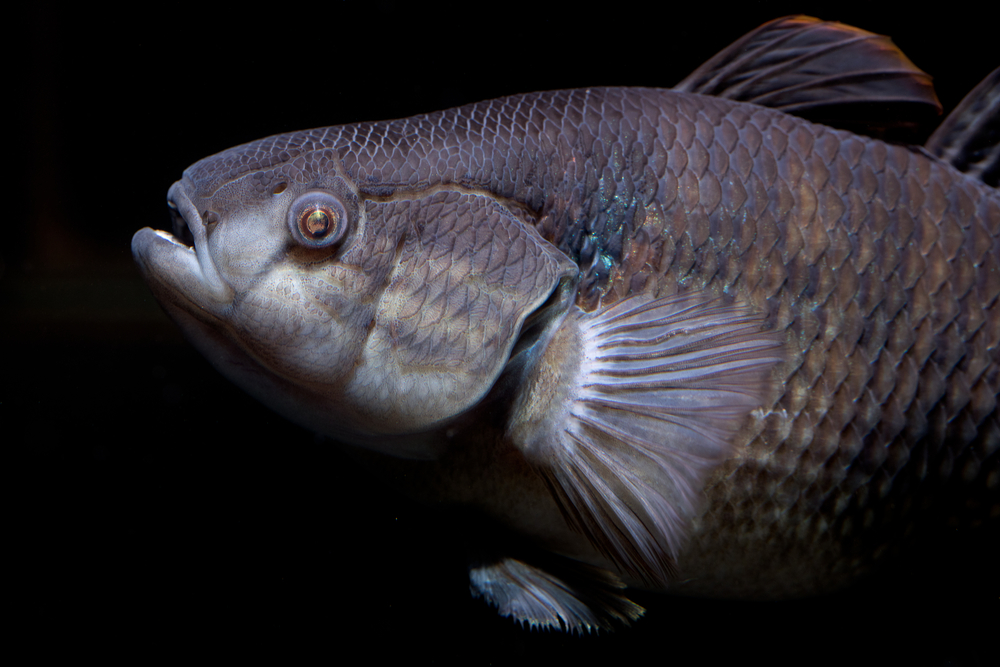
Thought to have gone extinct 66 million years ago, the coelacanth made a surprising comeback in 1938 when it was rediscovered off the coast of South Africa. These deep-sea fish have a lineage that goes back 360 million years, making them one of the oldest living species. Their survival can be attributed to their deep-water habitat, which offers protection from many surface-level threats. Living in depths of up to 2,300 feet, coelacanths are well-hidden from the chaos that affects more accessible marine life.
Their lifestyle is rather low-key, which might be another reason they’ve stuck around. Coelacanths are slow-moving and feed on bottom-dwelling fish, which means they expend little energy and require minimal resources. This laid-back approach to life might just be their secret weapon against extinction. While they’re not exactly thriving, their presence is a remarkable testament to the resilience of life on Earth. For now, these elusive creatures continue to intrigue scientists and the public alike.
3. Nautilus
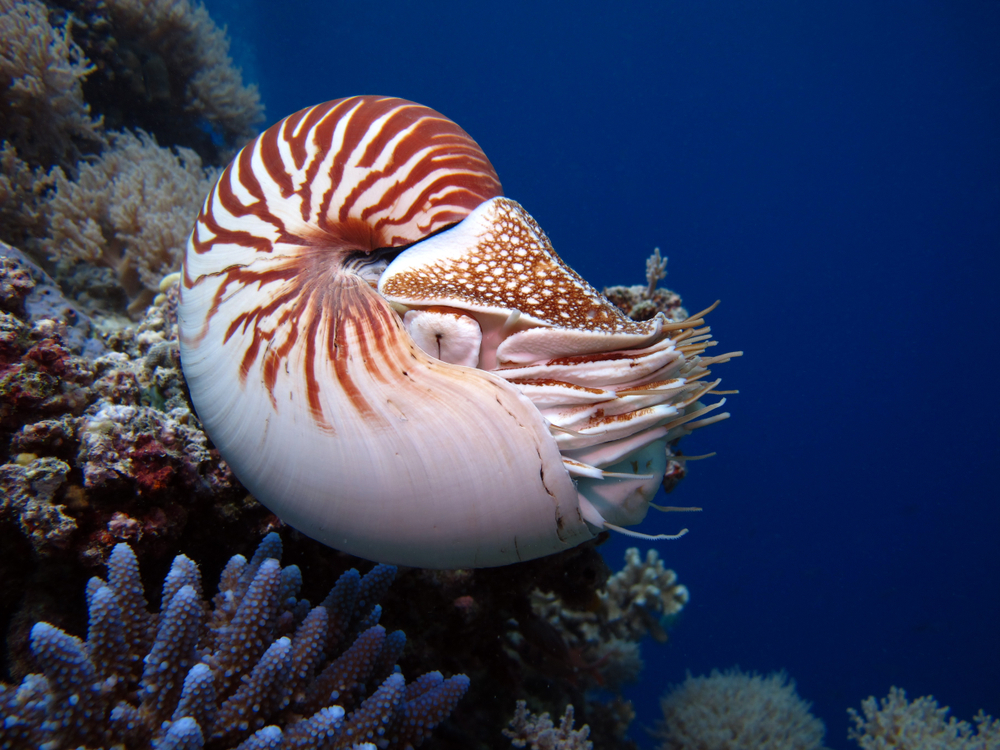
The nautilus is another marine creature that has witnessed the rise and fall of countless other species. Often dubbed as “living fossils,” these shellfish have been around for over 500 million years. Their hard, chambered shells provide excellent protection against predators and environmental changes. Marine ecologist Dr. Peter Ward notes that their ability to regulate buoyancy through gas exchange in their shells is a unique adaptation that has served them well through various mass extinctions.
Nautiluses prefer deep, dark waters where they can stay hidden from most predators. This isolation has been a double-edged sword, shielding them from many threats but also making them vulnerable to sudden changes in their limited environment. Unfortunately, they are now facing pressure from overfishing and habitat destruction. Despite these challenges, their long history of survival gives hope that with proper conservation, the nautilus can continue to endure.
4. Crocodile
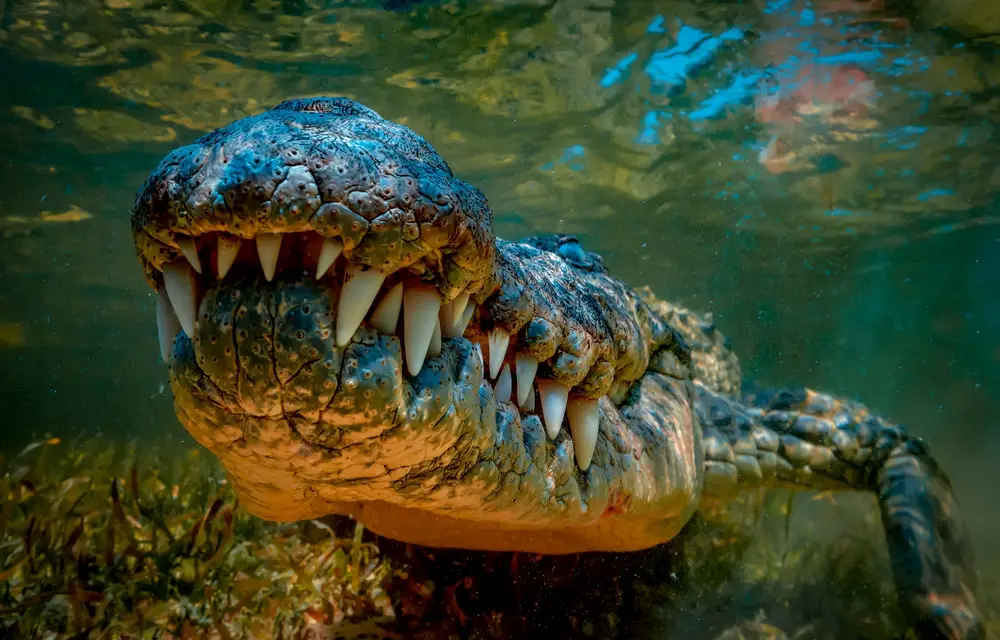
Crocodiles have been around for about 200 million years, and their ancient lineage is evident in both their appearance and behavior. These formidable reptiles saw the dinosaurs come and go, adapting to drastic environmental changes that wiped out many other species. One of the secrets to their survival is their opportunistic nature; crocodiles are not picky eaters and can thrive in both saltwater and freshwater environments. Their efficient hunting techniques and ability to go for long periods without food also contribute to their resilience.
Not only are crocodiles versatile survivors, but they also have remarkable adaptations for temperature regulation. They are cold-blooded but can regulate their body temperature by basking in the sun or cooling off in water. This ability allows them to endure a wide range of temperatures, which is crucial for surviving climate change. However, habitat loss and poaching pose significant threats to their populations. Protecting their natural habitats is essential to ensure that these ancient predators remain part of our ecosystem.
5. Tuatara
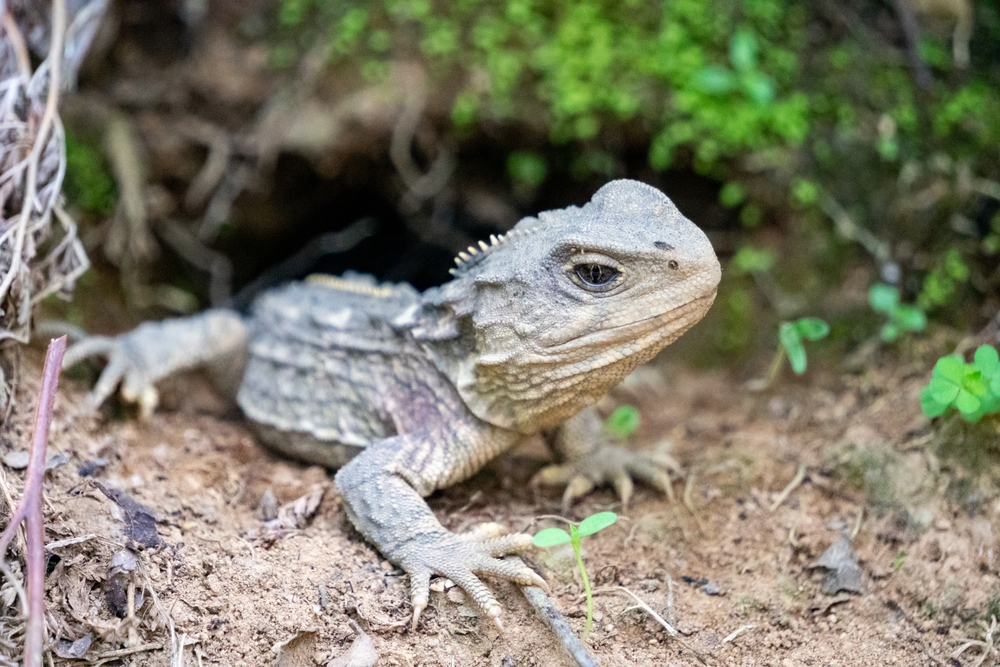
The tuatara is a reptile that looks like a lizard but belongs to a unique lineage dating back 200 million years. Native to New Zealand, these creatures have survived while many of their relatives disappeared. Their success could be linked to their slow growth and reproductive rates, which may help them better adapt to changing environments. Herpetologist Dr. Alison Cree points out that tuataras have unique physiological features, such as a parietal eye, which might contribute to their longevity.
Tuataras are nocturnal hunters, which means they avoid many daytime predators. They have a diverse diet, feeding on insects, small reptiles, and birds, allowing them to exploit various ecological niches. Despite their resilience over millennia, tuataras are now vulnerable due to habitat loss and introduced predators like rats and cats. Conservation programs are actively working to protect their habitats and control invasive species. With continued efforts, the tuatara might successfully endure future challenges.
6. Sturgeon
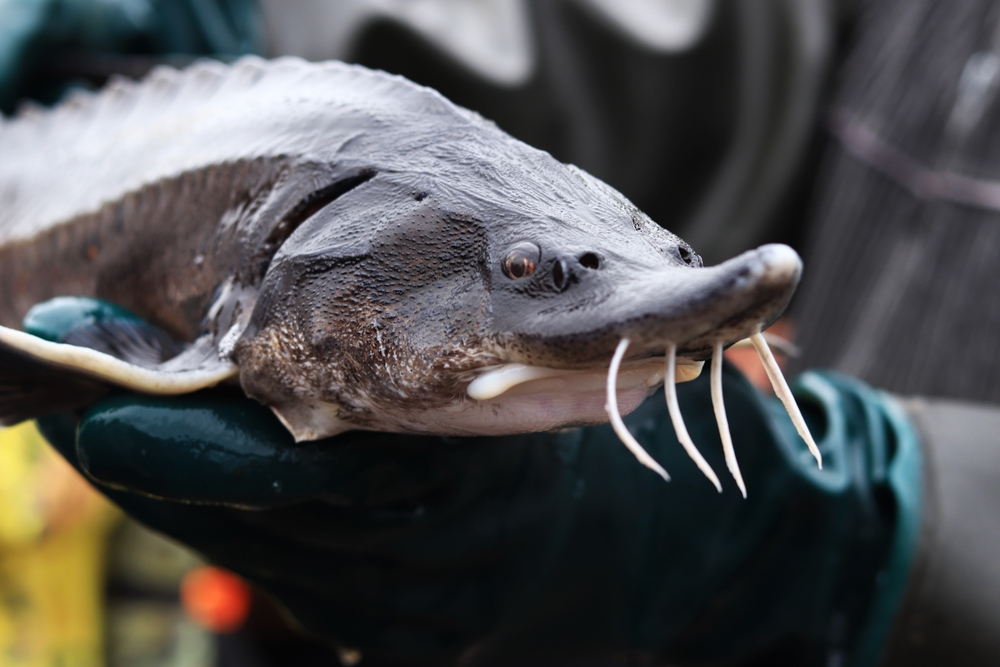
Sturgeons have been swimming the world’s rivers and lakes for over 200 million years, earning them a place among Earth’s ancient survivors. These fish have evolved alongside dinosaurs, outlasting them through adaptability and sheer resilience. Their long lives and late maturity mean they can withstand occasional poor breeding years, thus ensuring the survival of the species over time. Sturgeons are also highly adaptable, capable of living in a range of freshwater and saltwater environments.
One of the most fascinating aspects of sturgeons is their ability to travel long distances for spawning. This migratory behavior allows them to colonize new habitats and avoid localized disasters. However, their populations are declining due to overfishing and habitat degradation, particularly from dam construction, which blocks their migratory routes. Efforts are underway to restore their habitats and regulate fishing practices. With adequate protection, sturgeons can continue their incredible journey through time.
7. Ginkgo Biloba

While not an animal, the ginkgo biloba tree earns a spot on this list as one of the oldest living plant species, with a history stretching back 270 million years. Distinguished by its fan-shaped leaves, the ginkgo is often called a “living fossil” because it has no close living relatives. Botanist Professor Peter Crane explains that the tree’s resilience is due in part to its adaptability to different soil and climate conditions. This adaptability has allowed it to survive significant climate changes and geological events.
The ginkgo tree is remarkably resistant to pests and diseases, which further contributes to its longevity. It’s also known for its ability to regrow leaves and recover quickly from damage, making it a hardy survivor. Despite its ancient lineage, the ginkgo is now primarily propagated through human cultivation, especially in urban landscapes across the world. Its endurance over millions of years makes it a symbol of resilience and adaptability. With continued appreciation and care, the ginkgo tree will likely continue to thrive for centuries to come.
8. Jellyfish
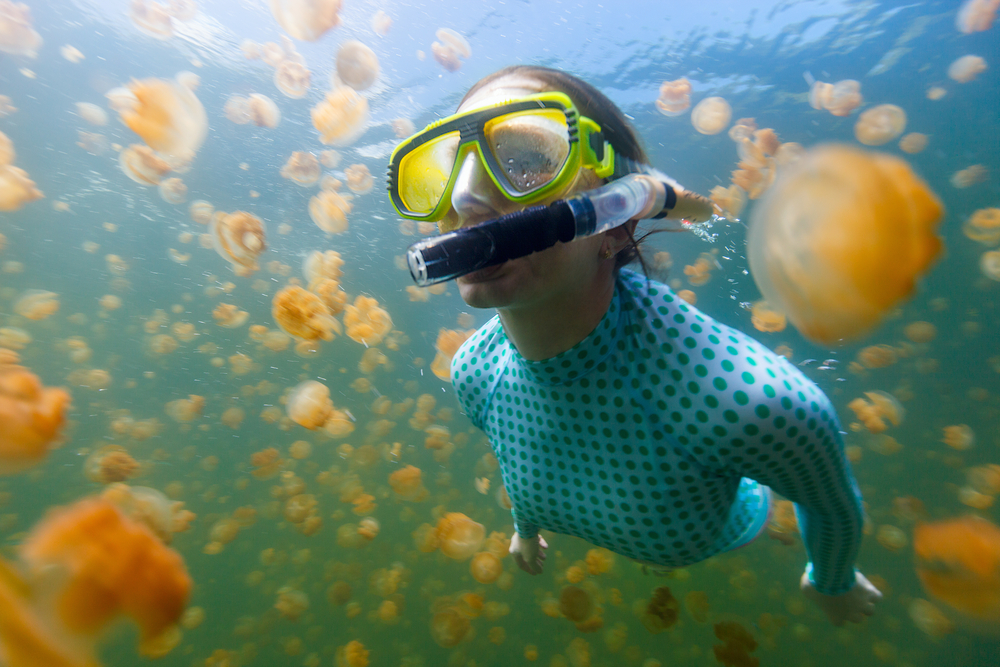
Jellyfish have been pulsating through the oceans for over 500 million years, surviving multiple mass extinctions. One reason they’ve been so successful is their simple body structure, which lacks complex organs but allows them to adapt easily to changing environments. Jellyfish can thrive in a variety of oceanic conditions, from warm tropical waters to the cold depths of the Arctic. This versatility makes them one of the most adaptable creatures in the marine ecosystem.
Their reproductive strategy also contributes to their resilience. Jellyfish can reproduce both sexually and asexually, allowing them to quickly populate areas when conditions are favorable. While they are often seen as nuisances in popular beach destinations, their ability to bloom in large numbers can serve as an indicator of ecological change. However, their increasing populations in overfished waters are causing concerns about marine biodiversity. Balancing their ecological impact while appreciating their survival story is a challenge for future generations.
9. Lamprey
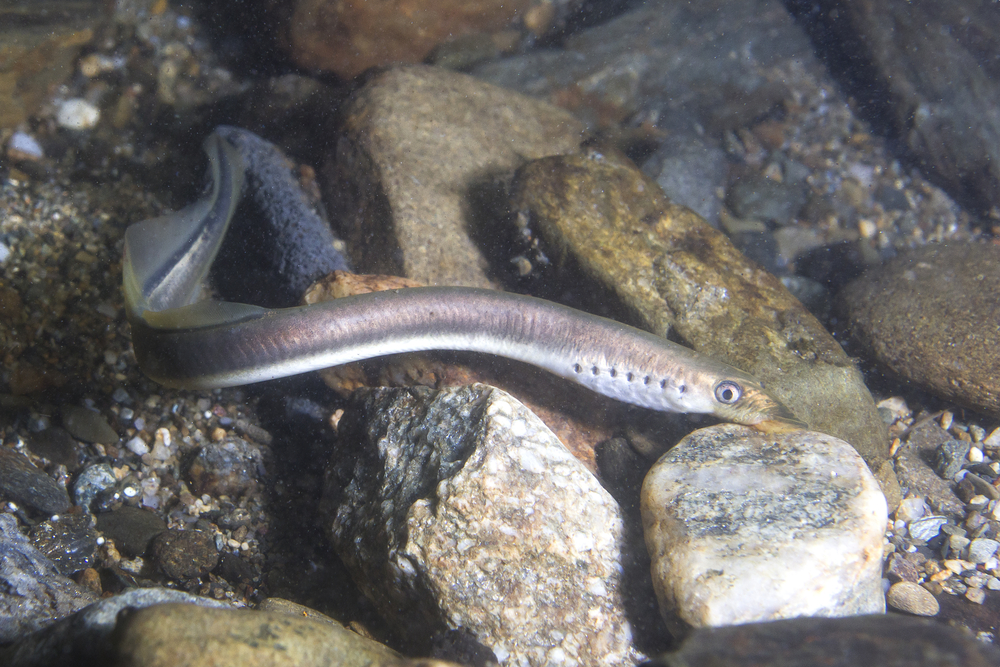
Lampreys are jawless fish that have existed for over 360 million years, predating dinosaurs. They have a unique, eel-like body and a sucker-like mouth filled with sharp teeth, which they use to latch onto other fish. One reason for their survival is their ability to live in both freshwater and saltwater, allowing them to adapt to various environments. This adaptability makes them versatile influencers in aquatic ecosystems.
Lampreys have a complex life cycle that includes significant time spent in larval form buried in sediment, which might help them avoid predators. They are often misunderstood and viewed as pests because of their parasitic nature, yet they play an essential role in maintaining the balance of aquatic environments. Many native lamprey species are now threatened by habitat loss and pollution. Conservation efforts aim to protect these ancient fish while managing their populations to prevent ecological imbalances.
10. Lingula
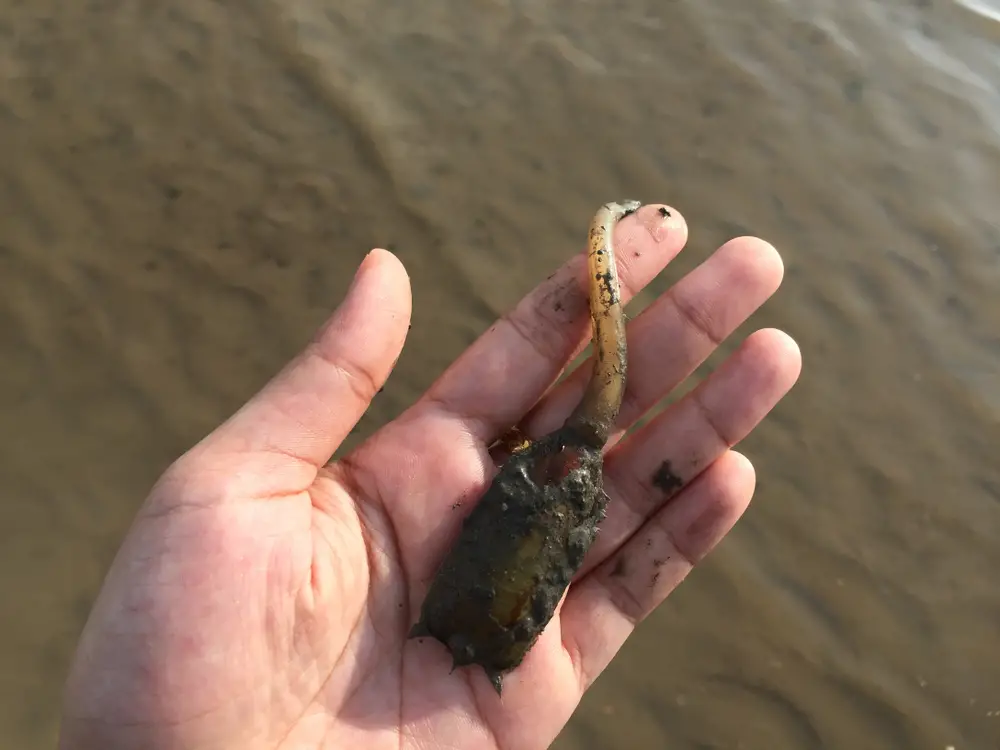
Lingula, a genus of brachiopods, has a lineage dating back over 500 million years, making it one of the oldest known animal genera. These small marine organisms resemble clams but have unique features that distinguish them from mollusks. One of their notable adaptations is the ability to burrow into the sediment, which provides protection from predators and environmental changes. This behavior has likely contributed to their survival through numerous mass extinctions.
Lingula’s simple yet effective anatomy allows it to thrive in a range of marine environments, from shallow waters to deeper oceanic zones. Their resilience is further supported by their ability to filter-feed, which requires minimal energy and resources. Despite their ancient origins, lingulas are often overlooked in marine studies and conservation efforts. Understanding and appreciating their role in the marine ecosystem can help ensure their continued survival in the face of modern threats.
11. Cockroach

Cockroaches might not be everyone’s favorite, but these insects have been around for over 300 million years, surviving numerous mass extinctions. Their secret to longevity lies in their remarkable adaptability and resilience to various environmental conditions. Cockroaches can eat just about anything, live in diverse habitats, and reproduce quickly, allowing them to thrive in challenging situations. Their simple yet efficient physiology makes them remarkably tough and hard to eradicate.
Another interesting aspect of cockroach survival is their ability to withstand radiation levels that would be lethal to most other creatures. This resilience has made them a subject of study for scientists interested in understanding survival mechanisms in extreme conditions. While often seen as pests, cockroaches play a vital role in the ecosystem by breaking down organic matter. Their extraordinary ability to adapt and survive is a testament to the resilience of life on Earth.
12. Sea Turtle

Sea turtles have been navigating the oceans for more than 100 million years, witnessing the rise and fall of countless species. Their long history of survival can be attributed to several factors, including their migratory nature, which allows them to exploit various habitats. Sea turtles are also known for their longevity and late maturity, which can help populations recover from occasional setbacks. Their ability to thrive in both coastal and open ocean environments further enhances their resilience.
Despite their ancient lineage, sea turtles face numerous modern threats, including poaching, habitat destruction, and climate change. Conservation efforts worldwide aim to protect nesting sites and reduce human impacts on their populations. Recognizing the critical role sea turtles play in marine ecosystems is essential for their protection. With continued conservation efforts, these iconic marine animals can overcome current challenges and continue their journey through time.
13. Sharks
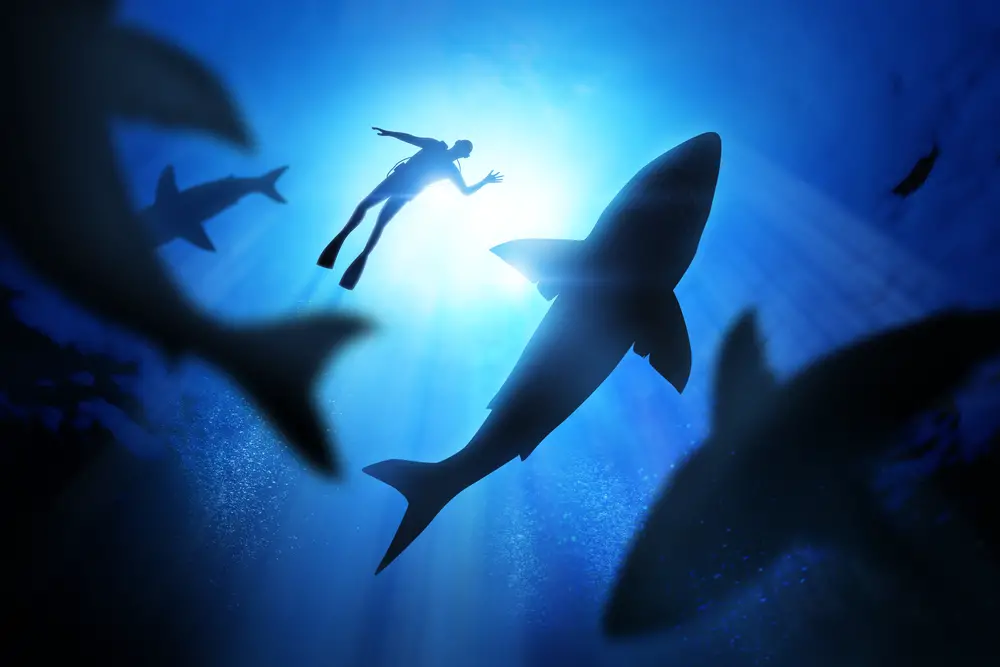
Sharks have prowled the oceans for over 400 million years, surviving several mass extinctions that wiped out many other marine life forms. Their evolutionary success is due in part to their adaptability and diverse range of species, each adapted to different ecological niches. Sharks have highly developed senses and complex behaviors that make them efficient predators and essential components of marine ecosystems. Their ability to regulate buoyancy and continuously grow new teeth are just a few of the unique adaptations that have supported their survival.
Despite their fearsome reputation, many shark species are now threatened by overfishing and habitat loss. Conservation efforts are increasingly focusing on protecting these ancient predators, which play a crucial role in maintaining the balance of marine ecosystems. Studies indicate that healthy shark populations are vital for the health of oceanic food chains. With increasing awareness and protective measures, sharks can continue their reign as one of the ocean’s most enduring inhabitants.
